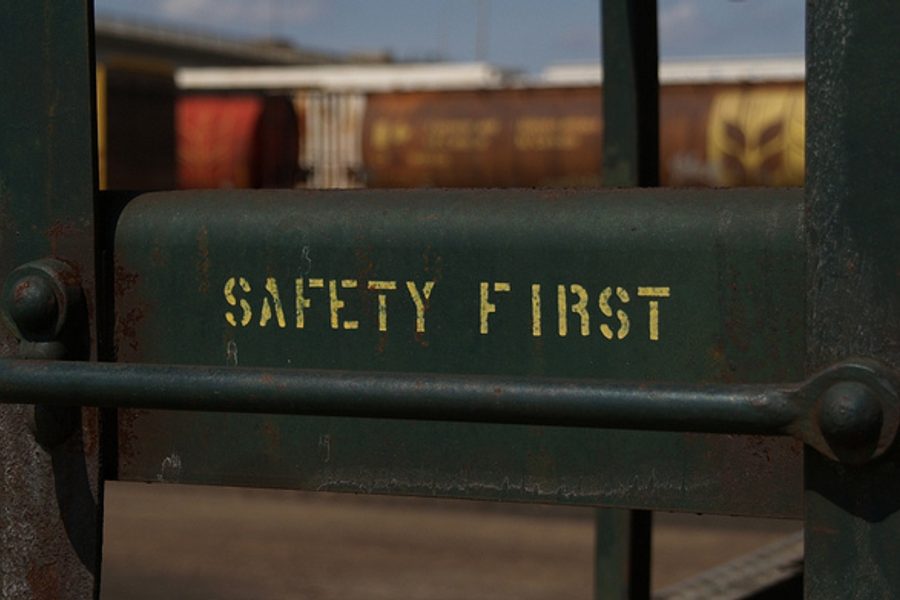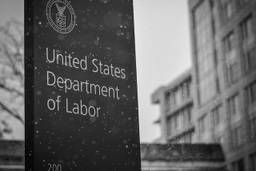New Congress on Track to Block Long-Sought Workplace and Public Health Protections
Elizabeth Grossman

An estimated 10,000 Americans die from asbestos-caused diseases each year, a figure that’s considered conservative. Asbestos is no longer mined in the United States but it still exists in products here, perpetuating exposure, especially for workers in construction and other heavy industries. In June 2016, after years of debate, the country’s major chemical regulation law was updated for the first time in 40 years, removing a major obstacle to banning asbestos.
Exposure to beryllium, a metal used in aerospace, defense, and communications industry manufacturing, to which about 62,000 U.S. workers are exposed annually, can cause a severe, chronic lung disease. On January 6, the Occupational Health and Safety Administration (OSHA) issued a rule — more than 15 years in the making — that dramatically lowers allowable workplace exposure to beryllium. OSHA says this will prevent 94 premature deaths and prevent 46 new cases of beryllium-related disease per year.
On April 17, 2013, an explosion and fire at the West Fertilizer Company plant in West, Texas, killed 15 people and injured hundreds. In late December — after a four-year process involving public, business, governments and non-profit input — the Environmental Protection Agency (EPA) issued a rule designed to prevent such accidents, improve community response to and preparedness for such disasters.
Those three examples are among the occupational and public health protective policies finalized by the Obama administration now jeopardized by antiregulatory legislation already passed by the 115th Congress. It remains to be seen if this legislation will become law and actually used. But, says University of Texas School of Law professor Thomas McGarity, the likely outcome is “that this will make people sick and unsafe.”
“Landscape is grim as it is”
In addition to having the ability to pass antiregulatory legislation, Congress has at its disposal the Congressional Review Act (CRA). Passed in 1996 by the Newt Gingrich-led House, it allows Congress to overturn a regulation passed during the last 60 legislative working days of an outgoing administration. What’s more, it prevents the creation of a substantially similar regulation. It’s only been used once, in 2001, to overturn the ergonomics regulation passed by OSHA under President Bill Clinton.
Add to this the Midnight Rules Relief Act, passed by the House on January 4. It amends the CRA, allowing Congress to overturn multiple regulations promulgated during the previous administration’s last six months, rather than individually as the CRA requires. “This allows the House to pick and choose rules that industry doesn’t like and do it all at once,” McGarity explains.
Also already passed by the House is the Regulatory Accountability Act. It includes a provision that could threaten the change made to the Toxic Substances Control Act (TSCA) eliminating the provision that prevented the EPA from banning asbestos. As Natural Resources Defense Council director of government affairs, David Goldston explains, “This bill has a provision that says notwithstanding any other provision of law, costs and benefits have to be considered when writing a rule.” Goldston calls this phrase “dangerous,” as it means putting economic costs to industry ahead of costs to human health as TSCA previously required — a requirement the revised bill eliminated.
And, as if these laws weren’t enough to threaten existing regulations, there’s the REINS Act (Regulations from the Executive In Need of Scrutiny Act), also already passed by the House. This law essentially says that an agency rule can’t go into effect unless Congress approves it. Or, as University of Maryland Carey School of Law professor Rena Steinzor explained in the American Prospect, “In a drastic power grab, the House has approved a measure that would strip executive agencies of the authority to issue significant new regulations.”
“If the REINS Act becomes law, then Congressional inaction will supersede previous Congressional action on fundamental bedrock popular health, safety and environmental protection laws,” says Public Citizen regulatory policy advocate Amit Narang.
He also points out that if the administration of Donald Trump declines to defend regulations now under legal challenge, they could also be undone. Among the rules now being challenged is OSHA’s long sought updated restriction on occupational silica exposure.
“The landscape is grim as it is,” says Emily Gardner, worker health and safety advocate at the non-profit citizens’ rights advocacy group Public Citizen, referring to OSHA’s limited resources. “There are nearly 5,000 workers dying on the job every year and OSHA’s not able to respond to threats as they’re happening.” Now, she says, “I’m looking at a Congress that would nearly paralyze rulemaking.”
“Designed to smash the system not reform it”
These laws effectively knock the foundation out from under how agencies like OSHA, the Department of Labor and EPA go about creating the network of regulations needed to implement the intent of laws that protect workplace and public health.
“This is designed to smash the system not reform it,” says Goldston of this antiregulatory legislation.
Not surprisingly, the historically pro-big business U.S. Chamber of Commerce supports antiregulatory legislation, as does the American Chemistry Council and National Association of Manufacturers. On the other hand, it’s opposed by American Sustainable Business Council, which represents more than 250,000 business owners and says the regulations these laws aim to undo are needed to support healthy, thriving workplaces and the economy.
Apart from the CRA, all of this legislation still needs to pass the Senate and be signed by the president to become law. But with a Republicans in the majority and Trump in the White House, vetoes seem highly unlikely.







